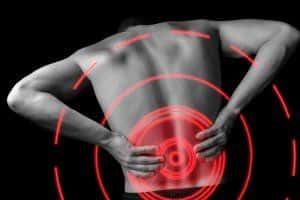
Spinal kinesiopathology is the unusual positioning or motion of the spinal bones, to the point where the patient’s ability to turn and bend is restricted. It is one of five components of vertebral subluxation complex — a set of symptoms and signs that affect the spinal column — and it puts the remaining four components of the complex into motion:
- Myopathology. When the muscles supporting the spine weaken, atrophy or become stiff, they can spasm. This can then lead to the formation of scar tissue, which is capable of altering muscle tone.
- Neuropathophysiology. Nerve tissue can become obstructed, stretched or aggravated when the spine does not function properly. Because nerve tissue is fragile, irritation can cause the nervous system to malfunction.
- Histopathology. If there is an increase in blood and lymph supplies, a person’s body temperature can increase, leading to inflammation and swelling. Discs may then tear, protrude, weaken or herniate.
- Pathophysiology. This is when atypical bony growths make an effort to fuse defective joints of the spine, causing scar tissue, nerve dysfunction and deterioration of the spine.
Any one of these components, including spinal kinesiopathology, can arise due to trauma (e.g. automobile accident or slip and fall), stress or chemical imbalances.
Though the spinal bones are designed to move and, at the same time, guard the spinal cord and nerve root endings, there are times when they move too much or can become fixed and not move enough. When the bones of the spine are stuck, or become fixated, and do not move adequately enough, they cause other joints to move more than normal. These issues can twist spinal curves and hamper function. Depending on the area of the spine affected, adverse reactions and symptoms can occur in other areas of the body as well.
How Chiropractors Detect and Treat Spinal Kinesiopathology
Your chiropractor can detect this trait of vertebral subluxation complex by examining your posture and gauging your ability to bend and turn. He will also look at your symptoms, one of which will likely include pain.
To treat spinal kinesiopathology, your chiropractor may perform spinal adjustments to realign the spine and release pressed nerves and nerve endings. This should reduce discomfort and improve mobility. Some techniques may include:
- Toggle drop. The chiropractor crosses his hands and gives a firm press to the spine, before adding a rapid thrust.
- Release work. Gentle pressure is applied with fingertips to help separate vertebrae that have become connected, or fused.
- Lumbar roll. The patient is placed on their side, and then the chiropractor employs a quick thrust to the area of misalignment. This is done in an attempt to place the vertebrae in their rightful position.
- Table adjustments. The patient will lie on a table that has sections that drop down. A quick thrust given by the chiropractor causes parts of the table to release and drop. When the patient’s body drops down with the table, the table comes to a rest, but the body is still in motion temporarily. The thrust and motion provide a more gentle adjustment than other techniques, which may involve twisting positions.
To learn about these and other spinal adjustment techniques, contact your chiropractor.